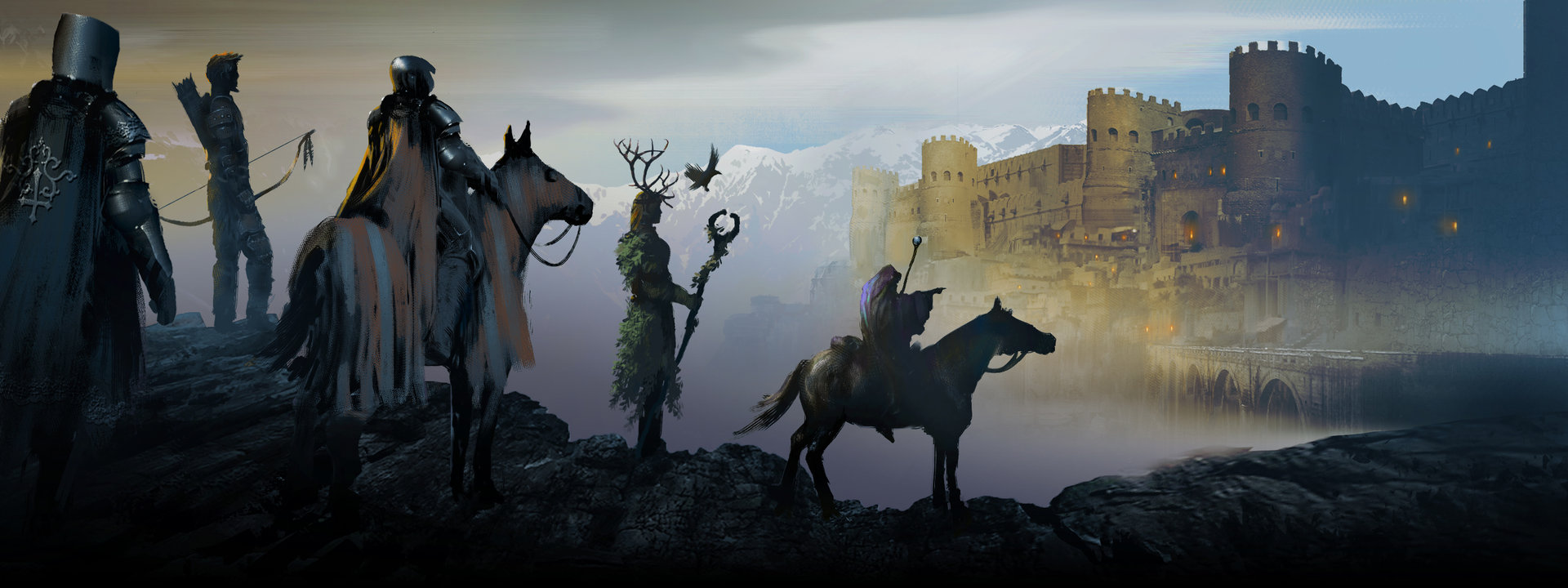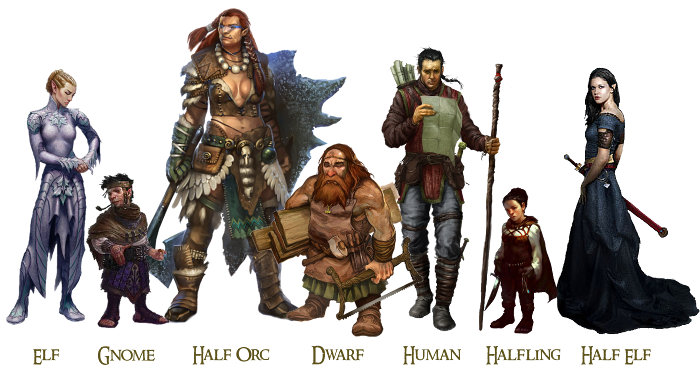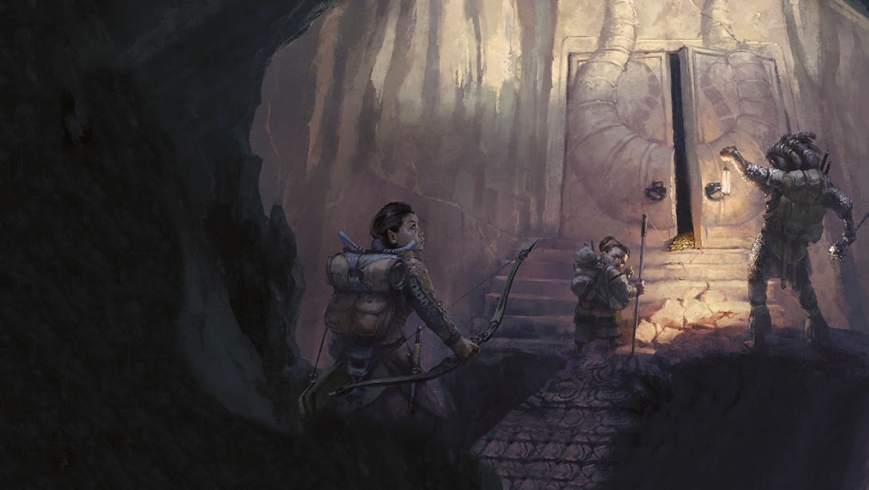Places & Races
"Being a campaign primer on the who's and where's of Gothenya."
Geography
Our world is one of strife and progress. It is comprised of three primary continents: Hariel Majour and Hariel Minuta (connected by a narrow land bridge called The Throat) comprise the West, while the super continent of Golthien lies to the East. We begin our adventure in the northern part of Hariel Majour (the northern continent of Hariel), in a land called The Freemantle. The Freemantle is a collection of tiny nation states (mostly agricultural in nature) that stand independent of the largest nation in Hariel, The Kingdom of Wyeth. Wyeth is an autocracy with a dynastic bloodline of Wyethian kings that goes back thousands of years. The nation is expanding, but not through conquest. It is generally peaceful, if overbearing. Your town is called Bramble. It lies on the northern edge of The Freemantle and is associated with no nation. It exists as a trading outpost, the last stop on the way to the savage north beyond. Just north of Bramble lies The Dullwood, a "haunted" forest said to be full of twisted creatures and corrupted magic. And north of that lies the treacherous mountain range known as The Blight. So why would any traveller wish to brave The Dullwood only to reach the inhospitable Blight? The answer lies with the mountain rage's tallest peak, Mount Celene. Often called "The Holy Mountain," Celene is said to be the ancestral homeland of the very gods themselves. Priests and devotees of all religions made pilgrimage after pilgrimage to Celene for thousands of years, and during this period many boom towns like Bramble popped up to serve the needs of the pilgrims. Then came The Sundering. People of faith weren't the only ones interested in Celene. The mountain was also said to be a stockpile of raw magic, and the magically inclined of the world set out to mine as much of it for themselves as possible. This led to an epic holy war, between priests and wizards, which culminated in a magical bombardment of the mountain, which inginited the magical energy within. The ensuing explosion took a chunk out of Celene and killed countless combatants. The aftermath of the explosion involved two major consequences. First, the gods fell silent. Many thought them to be killed in the explosion, others thought them either angry or in a coma. In any case, the only communication between those of faith and their deities now was through abstract dreams. The other consequence was the unleashing of wild, corruptive magic throughout the north. This magic mutated the normal animals of The Dullwood into dangerous beasts, lashing out in pain. The instant response from both Wyeth and the Freemantle was to blame the wizards. Thus began the magic "purges" where any user of magic was tracked down and imprisoned or killed. This prompted the grand exodus of mages to the south. They crossed the Throat into the less hospitable (and often desert-like) Hariel Minuta, where in the most lush region, they established the magical nation of Varuum, with it's capitol city of magic, Varuumae Corona. So, as it has been for two thousand years, the northern continent both fears and mythologizes magic, while the southern lands relish and cultivate it. But not all mages fled south. The true culprits of The Sundering, the Blood Mages known as The Lentokki fled east, across The World Sea, to the unexplored continent of Golthien. They landed in what is now known as Charport (the largest seaport on the western edge of Golthien) and headed further east to found Lentokk , the "dark mirror" of Wyeth. Here the Lentokki "God Kings" scheme to retake the West and achieve vengeance for their exile.The Races of Gothenya
This section merely describes those races significantly different than their default verisons. Elves Elves are broken into a few subcategories. The Solti are "high elves," noble if haughty beings that claim origin from Celene itself. They occupy the mystical city of Nieshmehil, deep in the magical Feywood which connects to The Dullwood in the Northeast of Hariel Majour. Their "lesser" cousins, born of the "natural world" are the Kelti "wood elves" of the Feywood. More down to earth than their cousins, though they still revere Nieshmehil and help to protect its borders. Finally, in the Deepining Pits beneath Celene, live the subterranean "dark elves," the Qualenti. These elves have been (rightfully or wrongfully) vilified by their cousins for dabbling in blood magic, which allegedly corrupted their souls, driving them beneath the surface of the world. Elves tend to stay out of human politics until the need arises for them to begrudgingly engage. Dwarves A diminutive "worker" race, the dwarves of the Blight are said to have been servants and builders to the gods. Some say they actually built Celene itself. Many think this to be hogwash. Tieflings One consequence of The Sundering was that suddenly some children were born (to otherwise "normal" parents) with the "mark of the devil." Some had horns, others tails, or skin in shades of red or blue. All that is known is these creatures are vilified (though in no way necessarily evil) and have only been around for a few thousand years. They tend to seek each other out, many having been abandoned by their human parents. The Isagorn (Hobgoblins) Called "Hobgoblins" by some, these beast-like folk are assumed by most to be evil incarnate. But the truth is far more complex. The Isagorn are a proud and strong people. They value honor and service above everything else. Outsiders find them warlike, but this quality is born of necessity, as they are mostly alone in their allegiances, especially in Hariel Majour. Where humans can tend towards xenophobia and racism, it comes out most unjustly when dealing with the Isagorn.Remove these ads. Join the Worldbuilders Guild





Comments